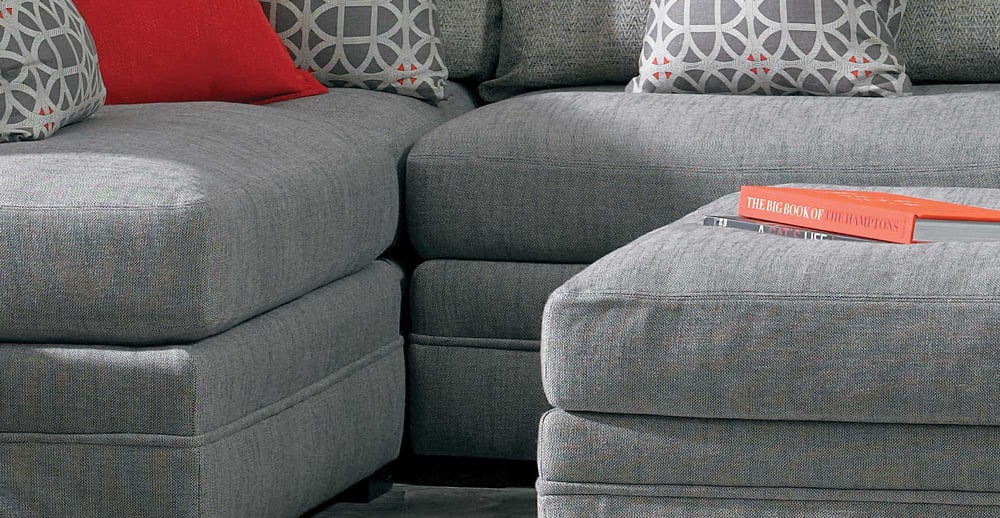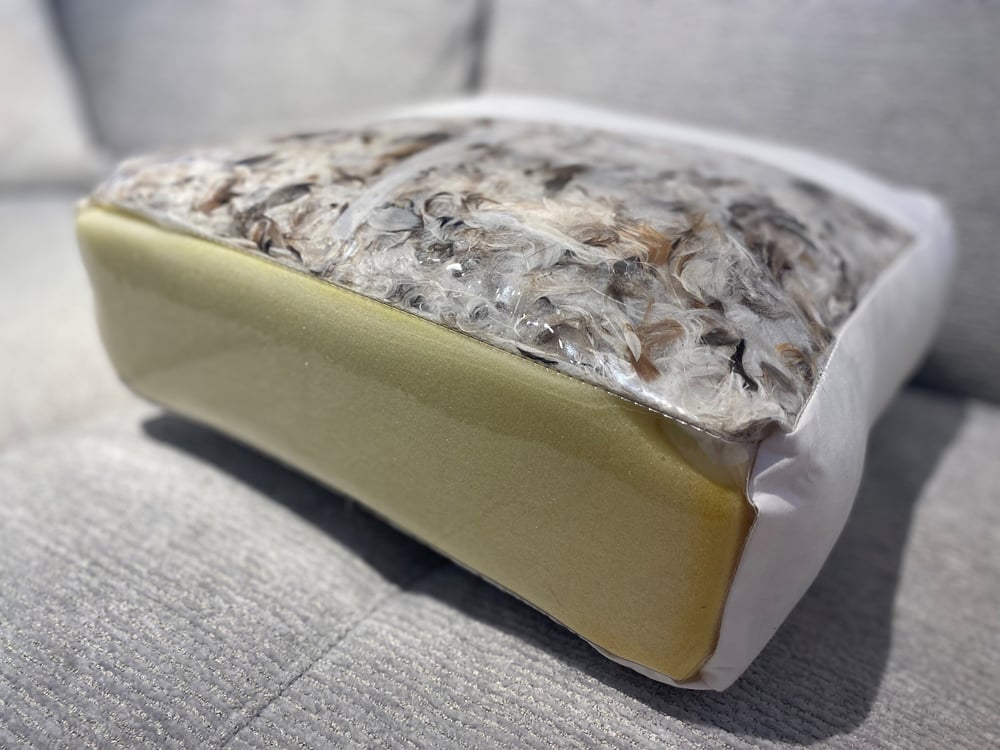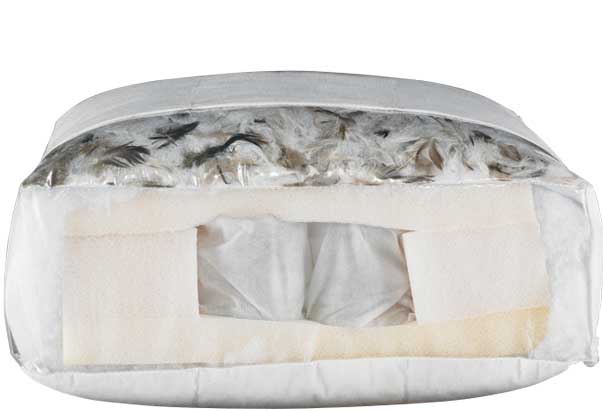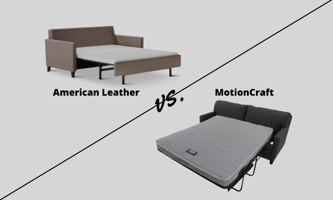There are many reasons to invest in a sturdy, well-made sleeper sofa. And both American Leather and...
Cushion Inserts for Upholstered Seating
Your comfort is paramount. And when it comes to the cushions of your furniture, of course, you’re going to need something that is going to support you – and support you comfortably! And as much as you don’t see the inserts that are inside your cushions, it doesn’t take long to determine if they’re going to work for you.
But do you know what you’re looking for with cushion inserts? Do you want something firm, supportive, padded, less… foamy? Not all cushions are the same – which is why it’s important to know exactly what you’re getting for your furniture.
At McElheran’s Furniture + Design, we’ve been providing the Edmonton area with quality furniture since 1994. And it’s those unseen details, like cushion inserts, that can make a significant difference in the quality of your furniture.
In this article, one of our in-house designers (Design Guides), Shelley, will take you through the different types of inserts that you can find in the cushions of your furniture, and we’ll get to the bottom of which one will actually work for you. First things first, let’s review what a cushion insert actually is…
What is a cushion insert?
Cushion inserts make up the inside of a cushion on a piece of furniture. The overall look, comfort, and how far you sink into your seat are drastically affected by what the insert consists of and how much material is used.
You may also hear the terms stuffing and filling in reference to cushion inserts.
What are the main types of cushion inserts?
There are five main types of cushion inserts that you will see in furniture. And just so you know, a lot of furniture companies will have slight variations in their individual insert construction, and they may also use different names to coincide with their branding. Asking your retailer or looking at the tag on the seat can help you determine what kind of insert you’re looking at.
1. Foam
Foam, particularly polyurethane, is the most common cushion filling. Even with cushions that contain springs or down, there’s almost always some component of foam involved.
You’ll most often see high and low-density foam in cushions, as well as soy-based, memory foam, and high resiliency foam.
For the most part, foam will be the main ingredient at the core of the insert and wrapped in different types of lining and padding. This padding gives the insert more support and protection and, aesthetically, adds a crown to the cushion.
Have you noticed that most cushions don’t lay perfectly flat, but instead bowl upwards toward the middle of the cushion? That rounded look on your seat is known as crowning.
2. Feather/down wrap
In this type of insert, the foam core is wrapped in feathers and down, which creates a cushion that feels plush and supportive. The insert is then wrapped again in what’s known as ticking.
Ticking is a fabric that encases the insert of a cushion, usually made from cotton or linen. It is thin but tightly woven to prevent fibres, usually feathers and down, from poking out of the insert and into the upholstery of your furniture.
3. Dacron wrap/batting
Dacron wrap, also known as batting, is a polyester fibre fill that goes around the foam. It’s used to fill out the insert so it can fit snuggly into the outer fabric of the cushion itself. The tighter fit prevents bunching and sagging, ensuring that your cushion holds its shape and stays comfortable.
4. Spring down
Spring down cushions are often seen in luxury furniture as they are generally regarded as the highest quality cushion in upholstery seating.
This type of cushion is almost like a mini mattress. Pocket-coil springs are aligned, encased in foam, and wrapped in a layer of down and feathers. Ticking is then used to keep the down and feathers inside the insert.
Spring down cushions will give you a plusher, more supportive, and luxurious sit than other types of inserts. You’ll also find that your cushions, with regular use, are more durable and will hold their shape longer.
5. Down feathers
Seat cushions made entirely of down feathers are extremely rare, since foam plays such a huge role in giving cushions added support and structure. However, you can find this type of insert in back cushions and toss cushions, since they take on less weight and are easier to fluff and adjust as needed.
How do I know which cushion is best for me?
There are certain inserts that are simply better quality than others. So, if it’s in your budget and you want your inserts to last you for years to come, spring down is definitely the more durable and luxurious option.
And if you’d like something a little more cost-effective, but still of reasonable quality, foam inserts with a Dacron batting may be able to fill that need for you.
Shelley has two suggestions when it comes to selecting your cushion inserts:
- Furniture makers will put the best seating on the frame to make the furniture sit the way it was designed to. It’s wise to go with the standard or recommended insert because you know it was created with that specific seating style in mind.
- ALWAYS do a sit test, when possible. Here we are going on and on about cushion inserts and their construction, which is all well and good, but the most important thing is your comfort! As you browse a showroom, sit on a few different pieces with different inserts. Get comfortable, take your time, and see which type of seating is most comfortable for you.
What about the foam in cushion inserts?
As mentioned earlier, you will almost always find some component of foam in your cushions for upholstered furniture – especially the cushions for seating. And you know what? There are a few different types of foam out there, and they’re certainly not the same!
If you want to explore the world of foam, since it is such a big part of cushion inserts, check out Measuring Foam Density and What it Means for Your Furniture.
And if you’re ready to take a sit test or two and try out different types of cushions, drop by our showroom! Feel free to sit on any sofa, sectional, or chair, and our Design Guides would be happy to answer any other questions you may have about the comfort of your seating.




-min-1.png?width=800&height=400&name=DesignButton(png)-min-1.png)


-min.jpeg?height=200&name=AdobeStock_392469423%20(1)-min.jpeg)